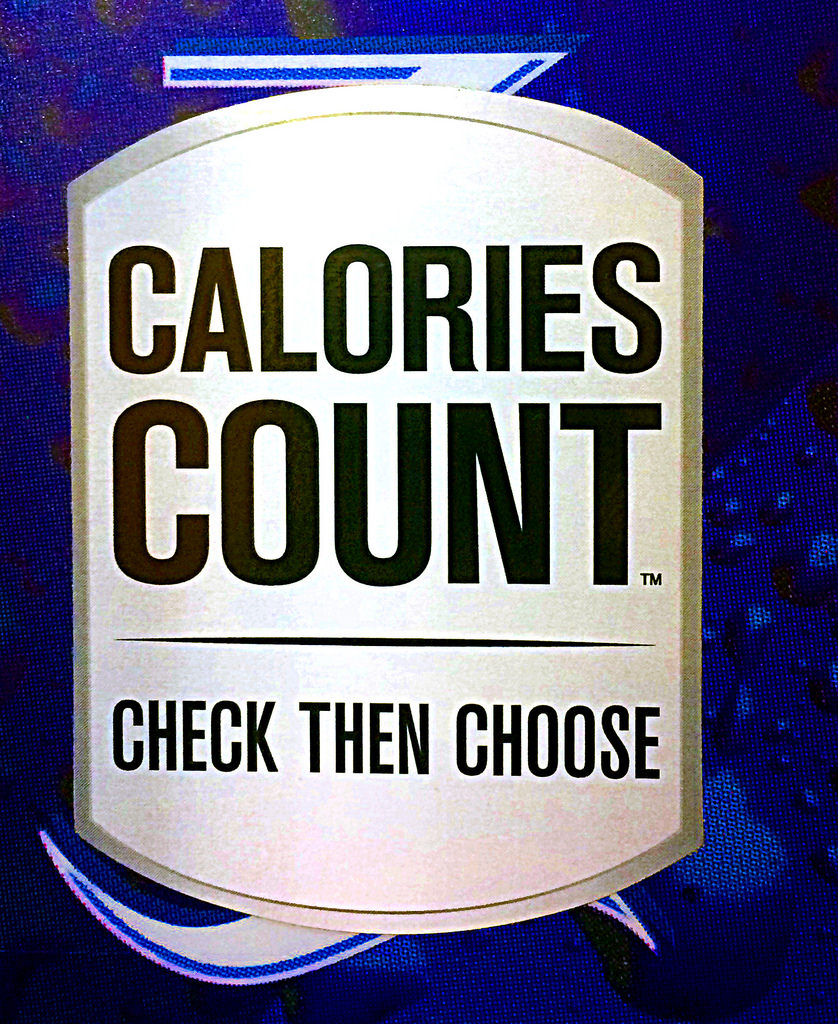Does Calorie Counting Work? The short answer is ‘yes.’ If you do calorie counting correctly, it can work well for weight loss.
If you choose this weight loss strategy, you will first determine how many calories you need to eat to lose weight. For this diet, you will be counting calories, reading labels, and measuring out all the food you eat. For this plan to work you will need measuring cups, scales, and Calorie Counting Apps, (myFitness Pal and FitBIT are great options) or calorie counting books. You can also look up calories on restaurant or on your favorite brands websites. Another option is following a low calorie cookbook or find a low calorie recipes online that have the calories already listed. You could decide you will meal plan using these recipes. The key is portion sizes.
Pros of Calorie Counting:
This diet gives you more flexibility than many other diets. For example you can eat pizza if you want, but you have to eat less food later to compensate for a higher calorie meal. On this diet, you can eat what you want as long as it is within your calorie range. However, the lower the calories the food has, the more food you can eat; thus, you will feel fuller and feel like you have eaten more if you stick to low calorie, nutrient dense foods. I find calorie counting works very well with mindful eating. Once you determine your calorie intake range, mindfully eat so that you can feel satisfied eating fewer calories than you are use to eating.


Remember, to lose one pound a week, you must take out 3500 calories a week. That means you need to eat 500 fewer calories a day to lose one pound a week and 1000 fewer calories a day to lose 2 pounds a week.
Note: You can also burn calories by exercising as well. In other words, you could take 500 calories out of your diet a day and also do enough exercise to burn 500 calories a day, which would equal a 1000-calorie deficit a day or 2-pound weight loss per week.
How Calorie Counting works:
First determine the amount of calories you need to eat in a day. Do not go under you calorie needs. For the most accurate calorie recommendations please see a dietitian. To determine a more accurate calorie recommendations a dietitian will use your height, weight, activity level, age, and more. You can also type in your height and weight on the Team Beachbody calorie calculator
For an estimate of the calories you need in a day, find your height in the chart below. If you are very active, you can go up one block (example: if you are at 1600 calories but are very active you can go up to 1800 calories). Below the calorie chart you will find the servings you should be eating at each meal to reach your calorie range.
Find your height below to see the amount of servings you should be eating per day if you are lightly active (If you are moderatley active add 100 to 200 calories to get an estimate of your calorie intake. If you are highly active add 200 to 300 calories to get an estimate of your caloire range):
Lightly Active Female between the heights of 5’1″-5’2″:
Calories per day: 1200
Lightly Active Female between the heights of 5’3″-5’5″:
Calories per day: 1300-1400
Lightly Active Female between the heights of 5’6″-5’9″:
Calories per day: 1500-1700
Lightly Active Female between the heights of 6′:
Calories per day: 1800
Lightly Active Males between the heights of 5’3″-5’4″:
Calories per day: 1400-1500
Lightly Active Males between the heights of 5’5″-5’7″:
Calories per day: 1600-1700
Lightly Active Males between the heights of 5’8″-6′:
Calories per day: 1800-2000
Servings of Starch per day: 7.5
Servings of Dairy per day: 2.5
Servings of Lean Meat per day: 10
Servings of Fruit per day: 4
Servings of Vegetable per day: At least 2 and up to 4 servings
Servings of Fat per day: 4.5
Lightly Active Males between the heights of 6’1″-6’4″:
Calories per day: 2100-2300
* Serving Sizes:
1 starch serving (pasta or rice) = 1/2 cup or the size of a lightbulb
1 starch serving (bread)= 1 slice
– 1 fruit serving= 1 fruit or 1/2 cup or the size of a lightbulb
– 1 milk serving = 1 cup
– 1 meat serving = 3 ounces or the size of a deck of cards
– 1 vegetable = 1/2 cup or the size of a lightbulb
When cooking food: Look up the amount of calories per serving in the food, and then measure out the appropriate amount using measuring cups or scales.
When dining out: Look up the calories on the restaurant’s website or if the restaurant is local, look up the calories for the general food you are eating. You may want to look up the calories in foods before you go to the restaurant to avoid looking at the menu when you are hungry at the restaurant.
One of the easiest ways to do calorie counting may be selecting pre-portioned, pre-packaged meals, and just count calories by reading labels. There is no room for guess work or underestimating when you eat pre-packaged meals. However, learning to count calories by controlling your portions on your own may be better in the long term. Using prepackaged meals will be harder if you are cooking for a whole family.
Another way calorie counting can be made easier is using low calorie cookbooks that have the calories per serving listed for you. You could use the cookbook to plan all or most of your meals again taking out a lot of guess work. But remember you still need to measure out your food to be able to eat the correct serving.
Yet another way to limit calorie counting errors, is to preplan your meals for the week using your recommended calorie range. Then make all your food one day a week. Pre-portion and pre-package them yourself, and put them in the freezer. You can also pre-portion snacks by taking them out of the bag and make pre-portioned zip-lock bags for snacks ready to grab. This way you won’t graze on snacks all day and you have included snacks in your calorie counting.
Cons of Calorie Counting:
A major difficulty with this diet is not knowing exactly how many calories are in a food and thus underestimating meals. In other words, it can be easy to cheat on this diet. We often underestimate what we eat; therefore, measuring out your food is crucial. And even when we measure, we can often still put too much by over filling the measure cups, going back for seconds, or taking bites of food while cooking or cleaning up, or just small snacking. We often don’t realize how quickly those side bites add up. For example, say you only had four small bites to taste your food while cooking. Well, if you did this for lunch and dinner, that now turns into eight bites. Eight bites can easily add up to 150 calories a day. That may not seem like much, but think of it like this. Say you ate 150 calories less a day. You would lose 15 pounds in one year just by taking 150 calories out of your diet a day. Well, the opposite also holds true. How many times have you thought, “I really am not eating that much more, why am I gaining weight?” I know I have thought this, but then I remember it doesn’t take much. If you eat 150 calories more than you are suppose to that day, then you will gain weight. So if you eat 150 calories more a day by taking 8 extra bites, or grabbing one piece of chocolate candy, adding extra dressing, or a hand full of chips (my weakness), then you could gain 15 pounds in one year. So you can see why calorie counting really needs to be accurate. One way to make sure calorie counting is accurate is by sticking to prepackaged pre-portioned foods. This will make calorie counting as easy as reading a label. Make sure you look at serving sizes when you read labels. Once I thought I was eating only one serving of sushi when I got a pre-packaged sushi roll. After eating the whole container of sushi, I felt very full. I relooked at the label and realized I had eating 2 servings and going way over my allotted calorie count for that meal.
Remember you can always combine diets from these different categories to come up with a diet plan that will work for you. For example, you might decide that for breakfast and lunch you want to eat the same pre-packaged meal everyday so you eat the same calories everyday for breakfast and lunch. (You would be using what I call the the Pre-packaged meal or Meal Replacement diet category here). You are calorie counting because you know that for breakfast you had 400 calories and for lunch you had 400 calories. That is 800 calories total. If you are on a 1600-calorie diet then you have 800 calories left for dinner. Then for dinner, you use a cookbook that has the calories listed to plan your dinner. You measure out 800 calories worth of food for dinner. Finally, you decide to eat raw vegetables with no sauce or dip for snacks throughout the day. This is one of the tricks listed in Snacking for Weight Loss Blog. (Raw vegetables are often considered free foods. In other words, because they are so low in calories you can eat them without counting them.) For lunch and dinner you are using the substitution diet. For dinner you are using a meal plan diet because you have set amount of meals to choose from in a cookbook. For the snacks you, are using the Snacking for Weight Loss tips. You of course are still counting calories as well.
Personal side note: I was very successful eating like the example above while my husband was deployed out to sea. I made calorie counting simple by using pre-portioned frozen foods. This was easy for me because I didn’t want to cook huge meals for just me, and it was easy for me to grab a frozen meal to take to work. However, when my husband returned this did not work as well. When my husband returned, I was cooking meals for him, and my lifestyle changed, I had to re-assess a plan that worked best for me. So like I had to do, you may have to change your plan when your lifestyle changes like in my case.
Again, most diet plans will fall into one or more of these categories. Many diets use the calorie-counting method. Many people successfully lose weight by finding ways to count calories. I would consider Weight Watchers a calorie counting method, but weight watchers make calorie counting easier by counting points instead of calories. Many have found success using Weight Watchers.
If you would like to see if calorie counting or other weight loss techniques may work for you, fill out the Diet Self-assessment Form.
Have you successfully lost weight by calorie counting? What techniques did you use to make counting calories easier and accurate?
You are free to retain any and all content here for personal use, but need permission to use it anywhere else on the internet.
